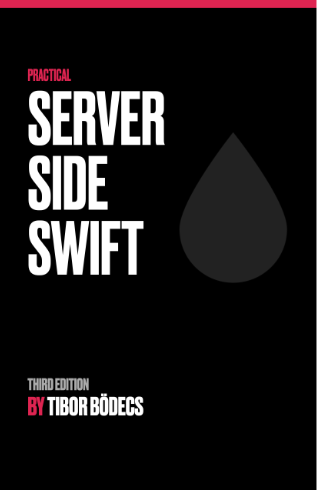Static site geneneration with the power of Swift and Toucan
Toucan is a lightweight static site generator written in Swift. This article will guide you through the process of creating your own website using it.
Installation
Toucan is available on GitHub as an open source Swift package. Feel free to clone the repository and run make install to make the toucan command available.
git clone https://github.com/BinaryBirds/Toucan.git
cd Toucan
make install
Usage
Toucan has 3 subcommands:
- generate
- watch
- serve
You should be able to generate a new website by using the generate command. You just need a project template that is compatible with the static site generator. We’re going to release an official template project for this purpose later on, but for now feel free to grab the source code of this website and use that as a starter project.
toucan generate ./src ./docs
By using the watch command you should be able to watch for file changes and auto-generate the static site, based on your source folder.
toucan watch ./src ./docs
The serve command will launch a basic web server, that you can use to preview your static site.
toucan serve ./docs
Project structure
The src directory is where your content and template files should be located. There are three key directories that toucan will use to generate your website.
contents- Your content using Markdownpublic- Public filestemplates- Template files
Contents
The contents folder is organized the following way:
posts- Place your blog posts under this folderpages- Place your page contents this folder404.md- The content configuration for the not found pagehome.md- The content configuration for the home pageindex.md- The content configuration for the entire site
Toucan will try to recursively discover all the content.md files under the posts and pages directory, and process everything based on those. You can also add cover image support by placing a cover.jpg file next to them.
You can easily embed images, just create an images folder next to your content.md file and you can reference those images without path prefixes, this also support dark mode variants, if you suffix the images with ~dark.
Public files
Everything what is located inside the public folder will be copied recursively during site generation process. This means you can reference these files when building your templates or writing your content. Feel free to use this folder for your CSS and public image assets.
Templates
The templates folder should contain the following files:
index.html- Tha index template file404.html- The not found templatehome.html- The home template filehome-posts.html- Post template for the home pagepage.html- Template file for individual pagespost.html- Template file for posts
Templates are plain old HTML files, feel free to modify them as you wish, you can use a few built-in variables to make them a bit more dynamic. Variables are in between {} characters.
baseUrl- Returns the base URL of the sitetitle- The title of the pagedescription- The description of the pageimage- The cover image of the pageslug- The slug of the pagepermalink- The permalink of the pagecontents- Used to embed other contentsdate- The date of the posttags- The tag list for the post
Markdown
You can write your content as Markdown text and toucan will generate HTML files out of it. Markdown files can have an additional metadata section, this is where you can specify the following attributes:
slug- Slug of your contenttitle: Title of your contentdescription- Description of your contentdate- Date of your post (e.g. 2023/04/24)tags- Tags for your post, separated by a coma
The index.md file is a special content file, this is where you can set up the following things:
baseUrl- Base URL of your site (e.g../,/,https://mywebsite.com)language- Language of your site (e.g. en-US)title- title of your sitedescription- Description of your site
The 404.md file is useful if you want to deploy your site using GitHub pages with a custom 404 page.
Summary
Toucan is a brand new project and we know it’s far from perfect, but if you are looking for a simple solution to host static sites using GitHub pages and you’d like to focus more on your content and less on the infrastructure it can be an ideal choice. Feel free to contact us if you want to know more about it or submit an issue, maybe even a PR on GitHub. 😉



